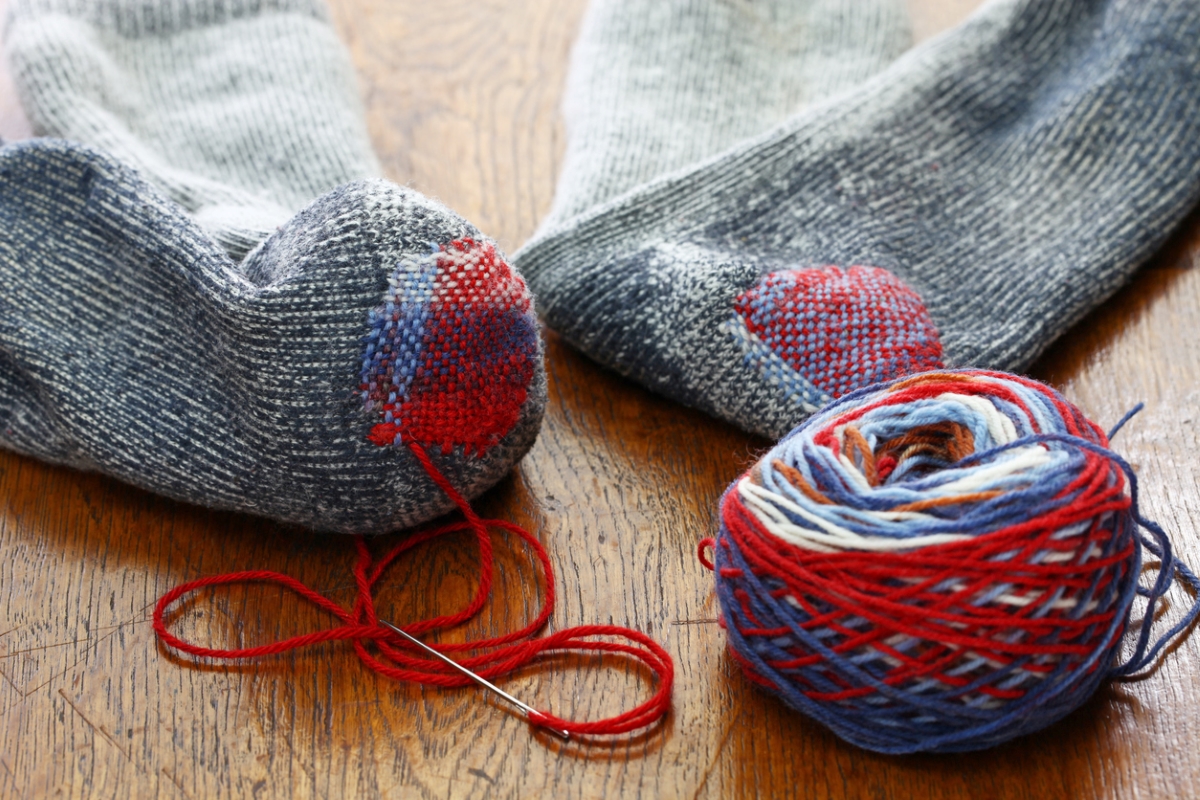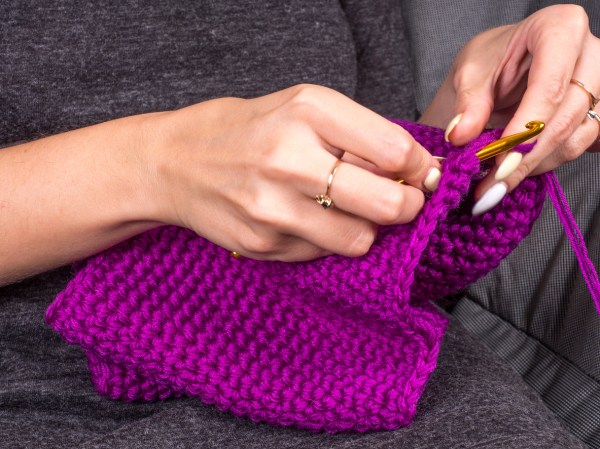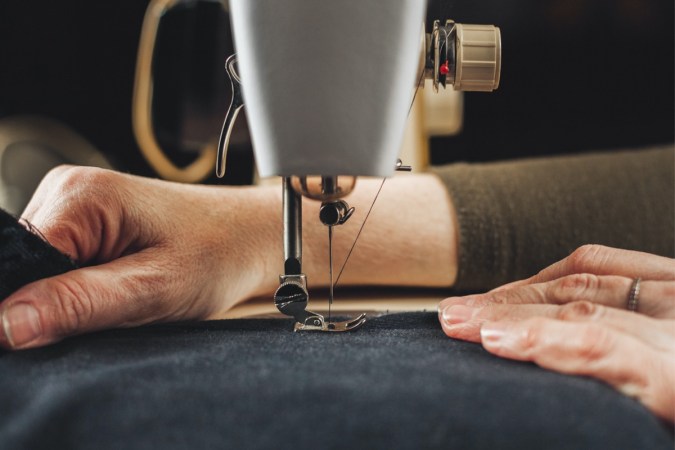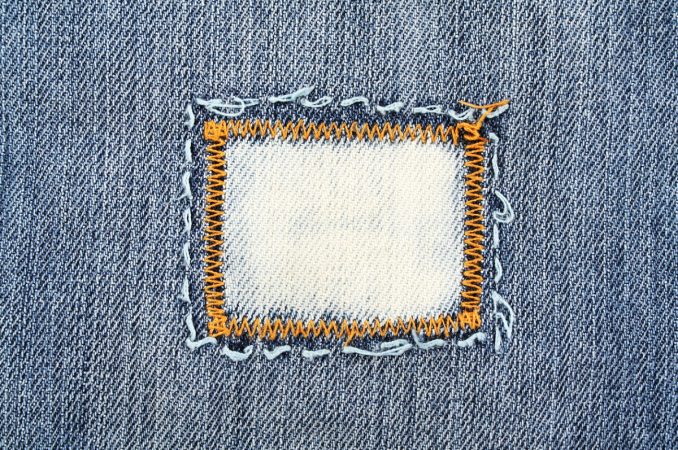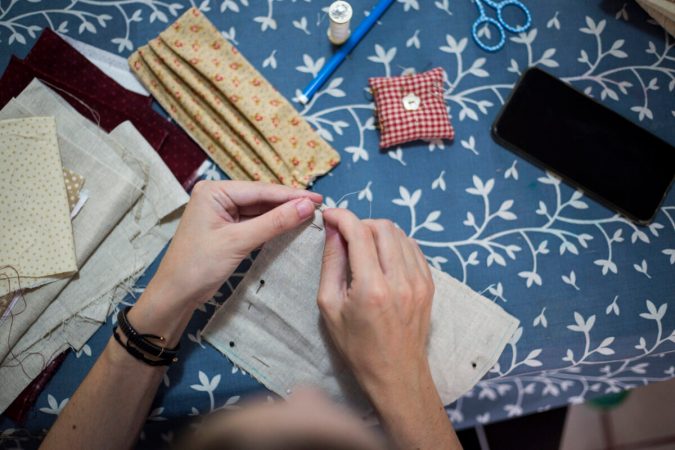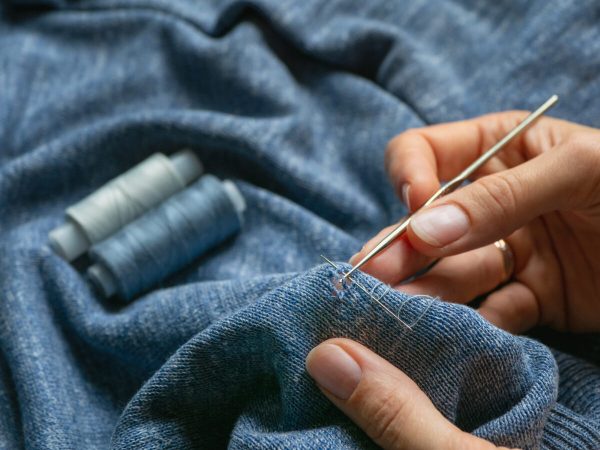We may earn revenue from the products available on this page and participate in affiliate programs. Learn More ›
With all the wear and tear from walking around, it’s no surprise that socks deteriorate quickly, often sprouting holes in the heel and toe. But there’s no need to throw out holey socks just yet—learning how to darn a sock can bring worn out garments back to life.
Darning is a sewing method often used to fix holes or threadbare spots in fabric. The darning process involves long interlacing stitches that create a weave, replacing a patch of fabric that is no longer there. The darning technique can be used to repair holes, strengthen worn out areas, or add a decorative touch to socks. Learn how to darn a sock by hand with the step-by-step guide below.
Tools & Materials
Bobvila.com may earn a commission from purchases made through these links.
Project Overview
Working Time: 5 to 15 minutes
Total Time: 5 to 15 minutes
Skill Level: Beginner
Estimated Cost: $5 to $20
BEFORE YOU BEGIN
Darning a sock is a straightforward job for anyone who knows how to sew by hand, but it’s important to have the right tools for the job. A darning egg, darning mushroom, or suitable alternative is a must-have tool for sock mending. These tools have a rounded end that holds the sock in a suitable shape for darning repair.
Items of a similar shape can substitute as a darning egg in a pinch, such as a plastic Easter egg, the rounded bottom of a small jar, or the end of a baseball bat.
RELATED: How to Sew Your Own Stuff
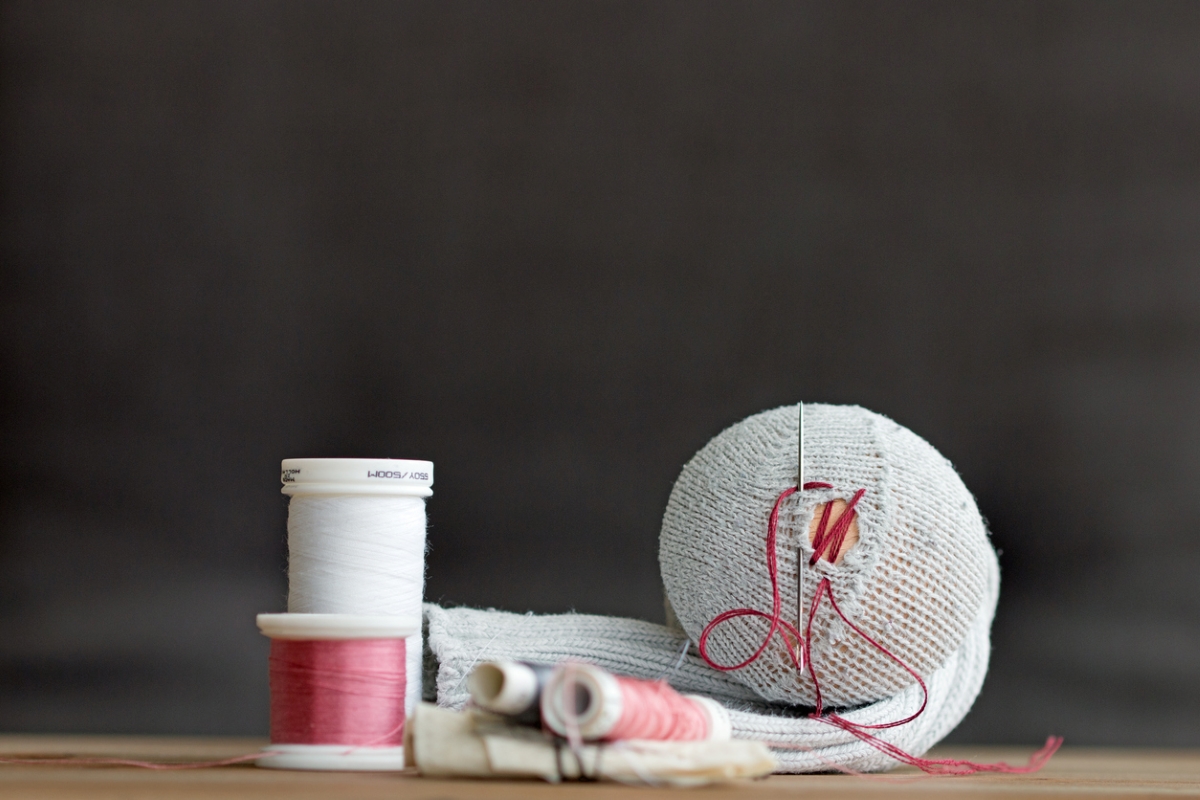
STEP 1: Choose a suitable thread.
Socks come in a variety of fabric types, so start with taking a close look at the sock fabric. Try to match the repair thread and sock fabric thread thickness. For example, for thinner socks, a sewing or embroidery thread may be suitable, whereas a thick thread or yarn may be necessary to darn wool socks.
Choose a similar thread color to the sock color for a more concealed fix or opt for a contrasting color for a more decorative repair. Regardless of color, use a needle size that’s appropriate for the thread size.
STEP 2: Place the sock on the darning egg.
Place the sock over the darning egg with the outside of the sock facing outwards. Line up the sock so the center of the hole sits roughly over the center of the working surface of the darning egg.
Secure the sock in place using a rubber band or hair elastic. The sock fabric needs to be smooth to the darning egg and slightly stretched out. Then, carefully trim any ragged edges or loose threads around the hole.
STEP 3: Thread the needle.
The amount of thread necessary for a fix depends on the size of the hole, so there’s some guesswork in this step. This darning method uses a running stitch to create a weave over the hole, so try to eyeball the length of thread needed to stitch over the hole twice. It’s best to err on the side of using more thread to prevent running out halfway through the job.
Thread the needle. There’s no need to tie a knot at the end of the thread.
STEP 4: Stitch a perimeter around the hole.
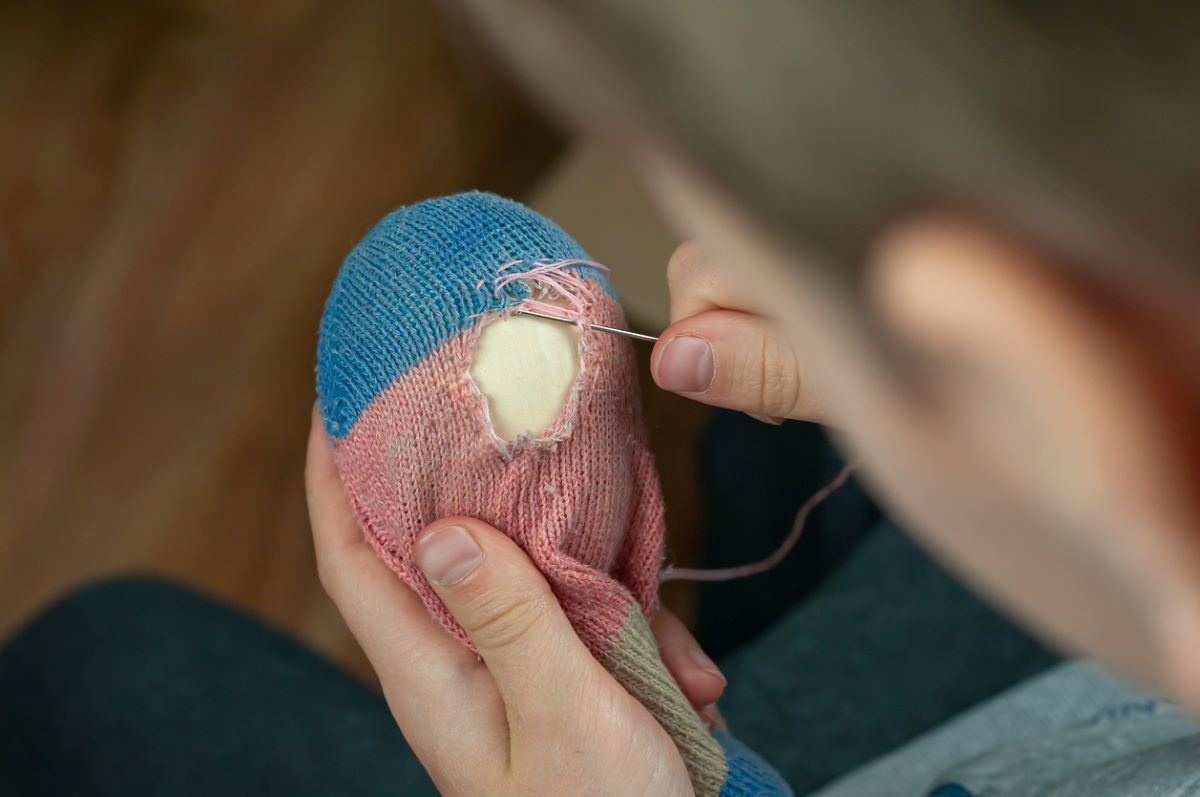
A perimeter stitch helps reinforce the area around the hole. It’s not always necessary, so for smaller holes or for a quicker repair, feel free to skip this step.
Insert the needle around an 1/8 of an inch away from the perimeter of the hole (or the threadbare area, if also darning worn out fabric around the hole). Sew a running stitch framing the hole or threadbare area, keeping the stitches around an 1/8 of an inch around the hole perimeter.
STEP 4: Sew across the hole.
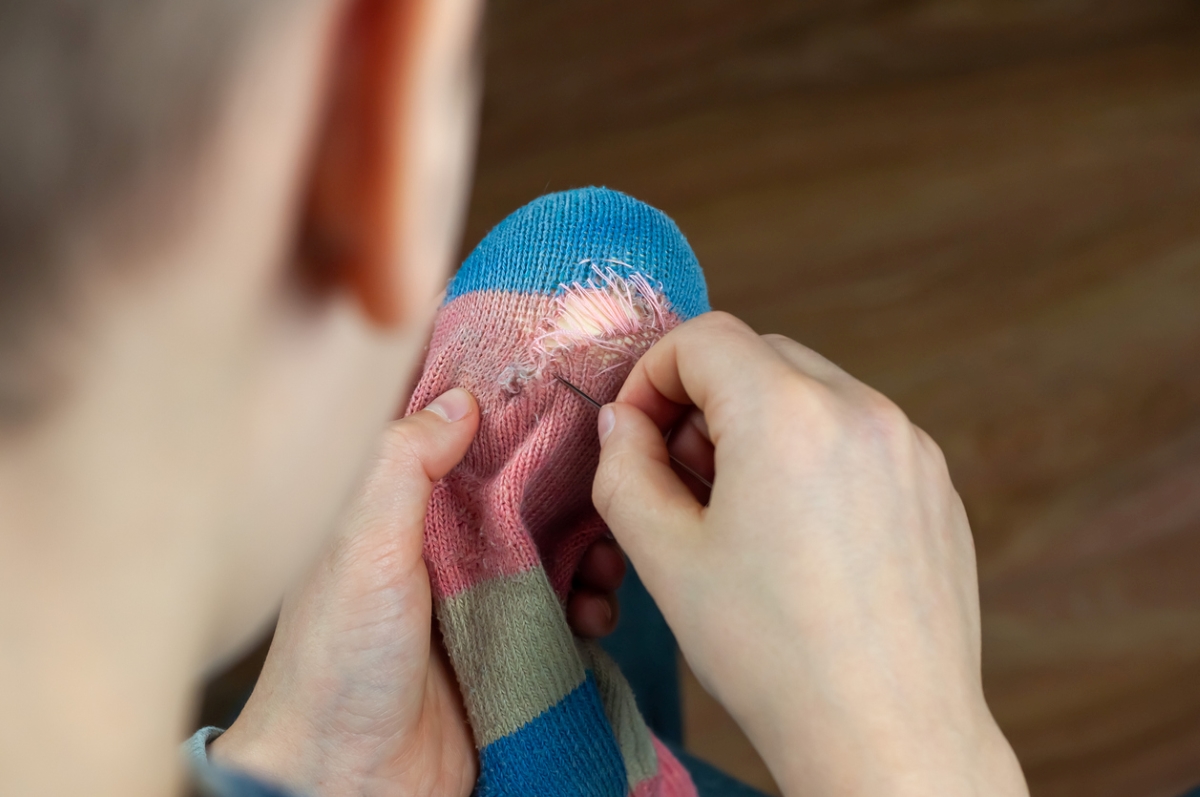
Now comes the darning step, which is essentially creating a new weave of fabric using the needle and thread. Start on one side of the hole, around an eighth of an inch away from its perimeter to prevent the hole border from fraying. Insert the needle from the inside of the sock, going outward, and make a long running stitch that crosses the entire length of the hole.
Repeat this step, with parallel stitches, until reaching the other side of the hole. Keep the stitches close together. The entirety of the hole should now be covered with parallel running stitches.
STEP 5: Sew across the hole again, weaving the stitches through.
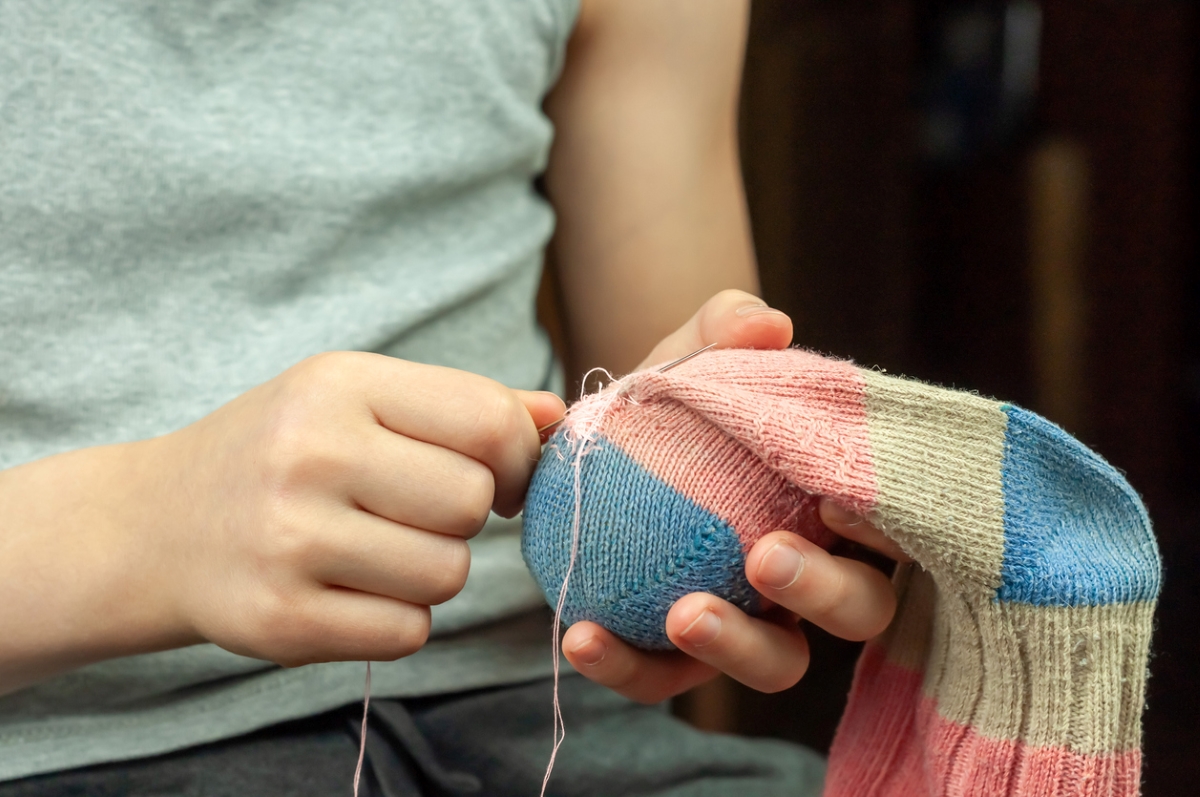
Repeat the previous step, but stitch in the opposite direction. This step creates stitches perpendicular to the last step. Weave each new stitch through the existing strands from Step 4. This action creates a reinforced, weaved patch, intended to make up for the fabric missing from the hole.
Continue repeating this step until reaching the other side of the hole, keeping the stitches close together. Every few rows, gently push together the new stitches to make the weave more dense.
STEP 6: Weave in the ends, and then iron the patch.
Once the hole is filled, use the needle to run the thread through the weaved patch a few times. Weaving the thread through this dense patch helps keep the thread in place, without the need to tie a knot. Snip the thread and remove the sock from the darning egg. Use the needle to weave in any other thread tails as well, such as the excess thread from the perimeter stitch in Step 3.
Ironing the patch is optional. Ironing can help flatten the patch, which is useful for smoothing out thicker patches.
RELATED: 12 Things That Belong In a Beginner Sewing Kit
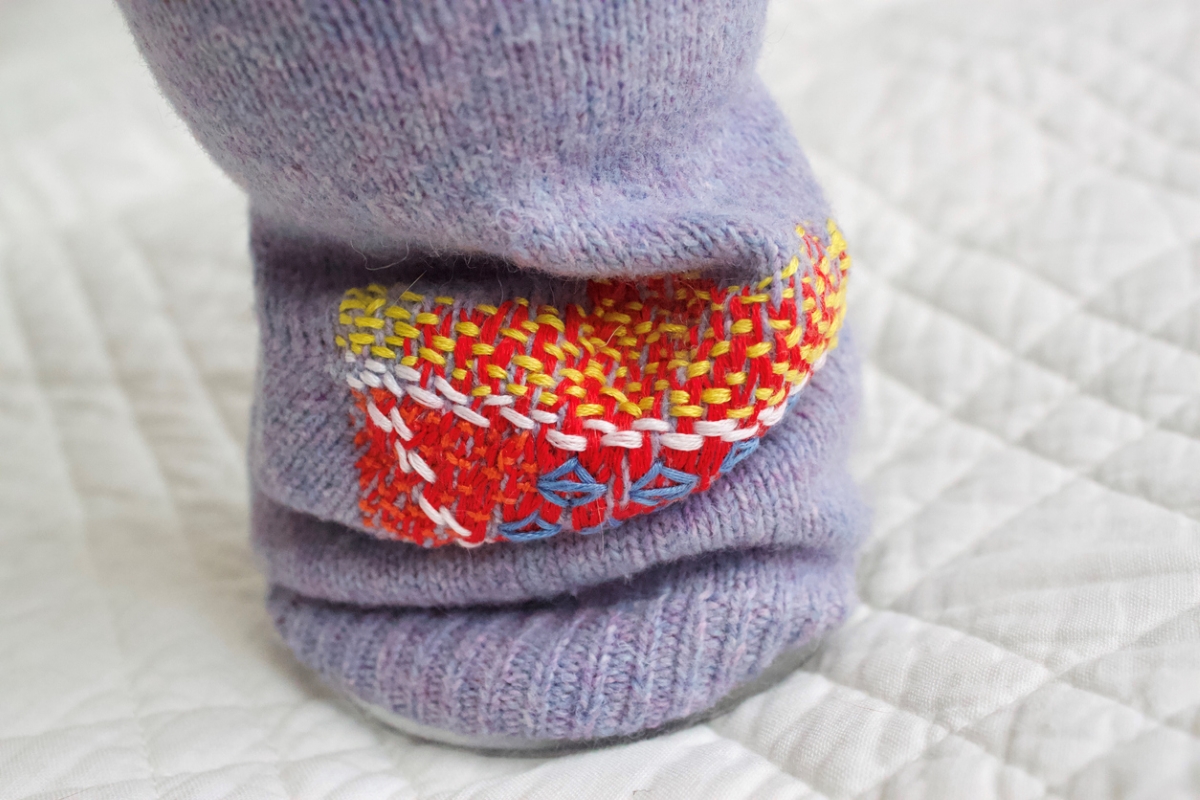
FAQ About Darning Socks
Once you know how to darn a sock toe or heel, you’ll also have the know-how to repair holes in other garments, like sweaters and shirts. Darning techniques are also useful for fixing non-clothing items, like patching a hole in a pillow cover or curtain.
Knowing how to darn can be a money-saver, extending the lifespan of clothing. This is a plus for the environment too, keeping holey socks and sweaters usable for a little while longer. Read on for some more tips and tricks related to darning socks.
Q. Is it worth it to darn socks?
Absolutely. Darning socks can make threadbare socks fit to wear again, so you get more use out of your favorite pairs and save them from going to the landfill prematurely. If a sock can’t be darned, try to find a way to reuse it before banishing it to the bin.
Q. What thread do I use for darning socks?
The best kind of thread for darning socks depends from project to project. Match the thickness of the thread to the thickness of the sock fabric threads. Hand sewing thread is often too thin for darning socks, so embroidery thread or yarn may be a better choice.
Q. Can I darn socks with a sewing machine?
Yes, it’s possible to darn socks with a sewing machine. However, darning with a sewing machine often requires special tools, like a darning foot. Darning by hand is so simple that it’s often easier to do the job sans sewing machine.
Q. How can I reuse old socks?
Reuse old socks for odd jobs around the house, like dusting blinds, wiping dry erase boards, or polishing the car. Socks can also be useful for covering or protecting items, like golf clubs or to wrap breakables for moving. If an old sock is past the point of repair, it can always have a new use as a cleaning rag.
Final Thoughts
Knowing how to darn is a simple but versatile skill. This guide outlines how to darn a sock, but this technique can be used to fix a hole in almost any item, from the worn elbow of a sweater to a puncture in a screen door. Beyond simply repairing holes, decorative darning can add a pop of color, texture, or pattern to garments of all kinds. With this skill, you can restore old socks (and much more) to their former glory.
RELATED: The Best Online Sewing Classes

